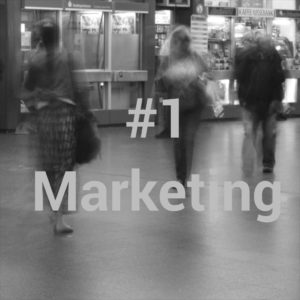Part 1: Marketing! Are you attracting strangers?
In our years of trade show experience we have seen sales and marketing teams each expressing expectations on the other. Both perspectives are valid but not always easy to understand. So it seems helpful to show the needs of marketing and sales “translated” into practical actions.
In this two-part article we aim to share our experience, thoughts and perspective on the importance of good team work to create optimal trade show presences. We explain how we think the two teams, marketing and sales, need to support each other.
In this first part we establish the core requirements that marketing teams and agencies should create in order to deliver a genuine platform to support the sales team.
 The prime target for a trade show is not the existing customer base, it is the stranger. We need to support the sales person with all the means that provide the catalyst for engagement with strangers.
The prime target for a trade show is not the existing customer base, it is the stranger. We need to support the sales person with all the means that provide the catalyst for engagement with strangers.
Trade shows are a stage, a platform and a medium for the sales process. For a trade show presence to fully support the message it needs to go further than just being smart and functional.
Firstly, getting visitors to stop in their tracks
Prospects are strangers, they are strangers to the products and possibly the company. Prospects don’t necessarily know we exist, or that we are at the show. We need them to stop when they are confronted with our stand and we must capture their attention. If people walk on by, sales can’t be expected to identify a prospect or communicate with them to promote the company’s message. Products, demo stations and signage alone rarely get a person to notice a stand or to stop.
Secondly, give visitors a basis to come into the stand space
If, however, we do manage to capture their attention and make them stop, we then need to draw them into our space. If our space has nothing that entices them, we can’t expect sales to chase them in the aisles.
Brochures, demo stations and smiling faces are important but unlikely to make someone walk into someone else’s space without having an agenda. A stranger to the company and its products has no prepared intent. Strangers will not automatically feel comfortable coming onto our carpet. Indeed, they most likely won’t, so we need to provide something that is enticing and a subject of likely interest.
Thirdly, create a catalyst for relaxed conversation
Sales people, like everyone else, need to have an opportunity to “dance” the small talk and social conventions. Having got strangers to stop and enter our space, expecting sales to launch into a product conversation is not conducive to the sales process. Neither the prospect, nor the sales rep will feel comfortable. If on the other hand marketing has provided a catalyst for the sales person, then we have supported them with a good start to build the relationship. People need to go through the rituals and reduce the distance that strangers naturally have.
Marketing can try a combined tactic for the first three points
Trade shows can be boring. Demos, loud talking, signage and messaging for eight hours or more. Not to mention the queues for the catering or restrooms. A touch of something different, related to the product but not business can be the difference to get the people to stop, come in and engage in conversation.
A Barista with overhead video feed on a big screen showing the foam decoration; a cool vehicle; designer furniture or even a well-known person, can all work to get the “Stop, Join and Speak” effect with a single plan and budget outlay.
Fourthly, ensure the tools and resources are available and suitable
Finally of course we need to provide the resources that sales people need to deliver the company message in a professional, clean and timely manner. We need to consider the type of event and provide resources that are suitable for the intended audience.
Is the event many conversations with many consumers or low-level prospects; or is the interaction one per hour with CxOs or high-level deciders? If speed is important, it should still not appear rushed. The devices, be they digital, signage, paper or demo stations need to work, be ergonomic and appropriate.
Irrespective of the chosen resources, there must be enough and they must be easily accessible. No hunting, fumbling or making do!
We think to support sales the following is a good check list to serve them well…
- Have we created a reason for a stranger to stop and notice us?
- Have we created a stand that has the effect of drawing these strangers in?
- Have we provided the sales people and strangers with catalysts to engage in conversation?
- Have we provided all the necessary and appropriate tools the sales person needs?
In marketing you are measured by the success that sales can derive from the event. The answers to these questions provide you with a “litmus test” to ensure you are creating an effective event. In addition, these questions help you formulate the arguments and justifications for budget…
Coming up next week

